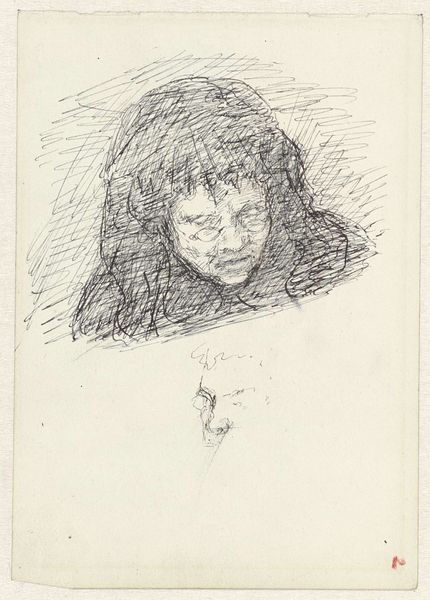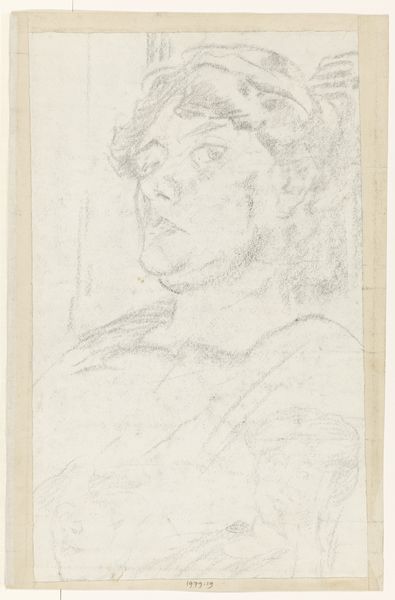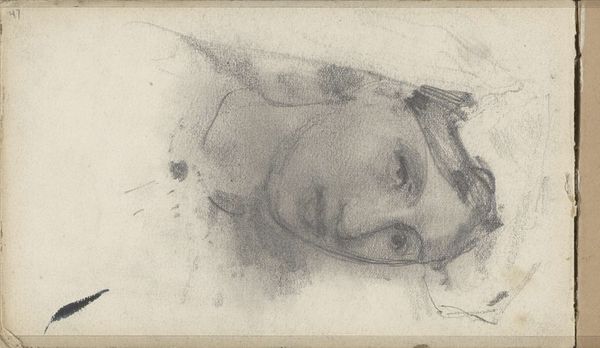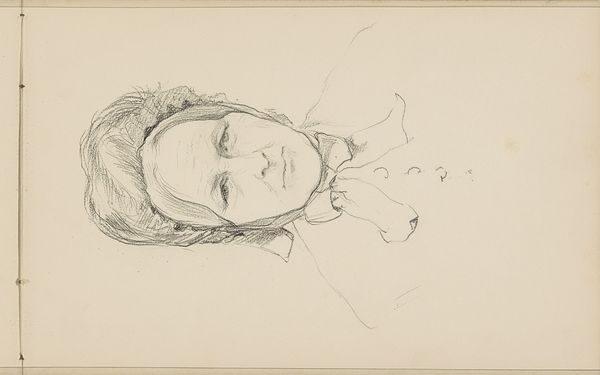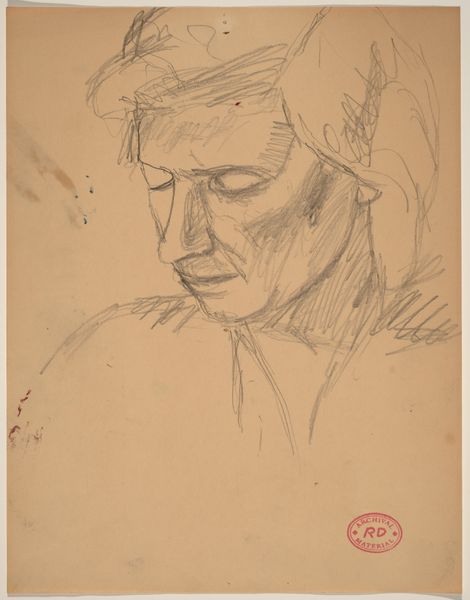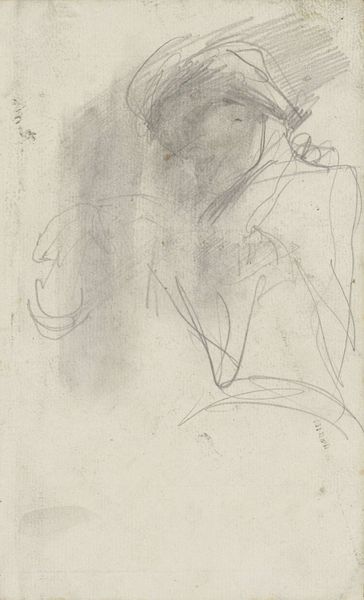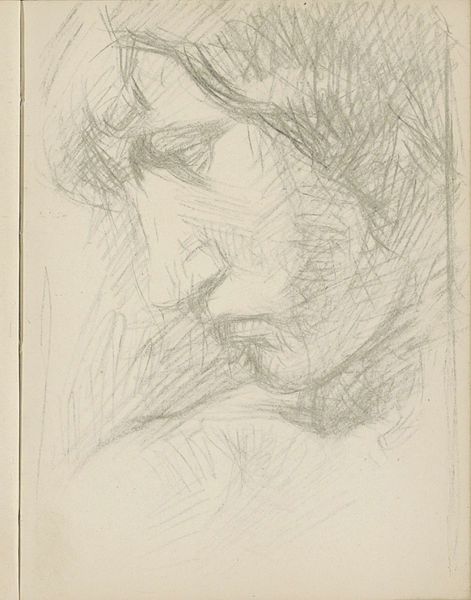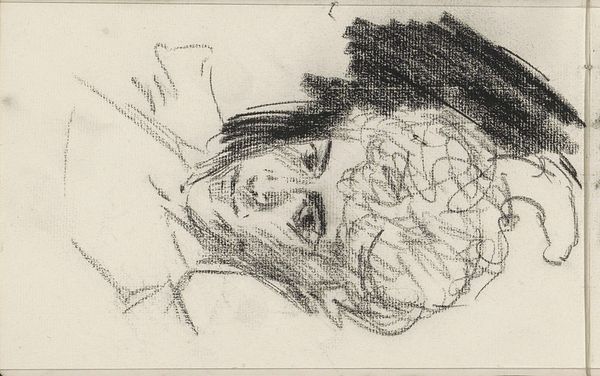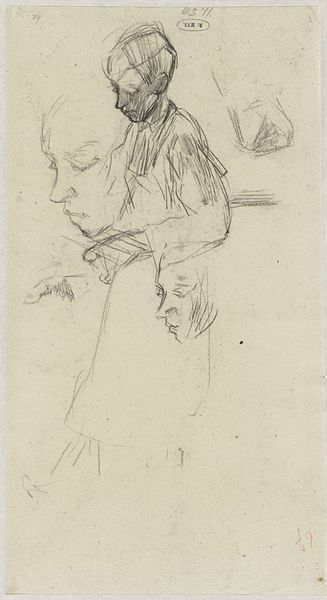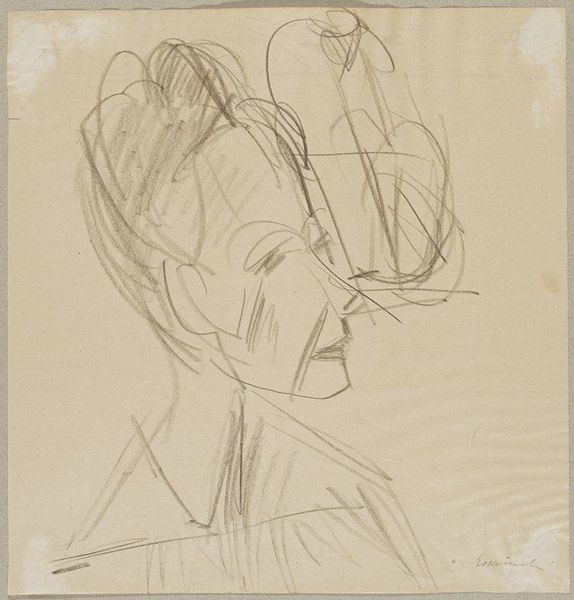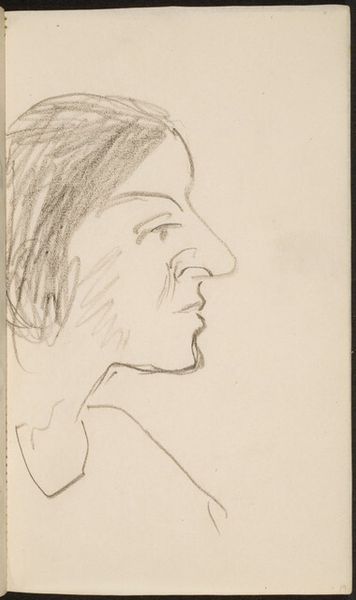
drawing, pencil
#
portrait
#
drawing
#
pencil
#
portrait drawing
#
realism
Dimensions: height 290 mm, width 190 mm
Copyright: Rijks Museum: Open Domain
Curator: Here we see "Head of a Woman with a Veil," a pencil drawing by Jozef Israëls, dating roughly between 1834 and 1911. It’s currently held here at the Rijksmuseum. Editor: It feels raw. Almost unfinished. The woman’s pose suggests weariness. Curator: Definitely. The veil partially obscures her face, lending an air of mystery, or perhaps a sense of enclosure. The downward gaze amplifies the emotional weight, tapping into collective memories of sorrow and contemplation. Veils in art, particularly from this period, can signify mourning, piety, but also a sense of hidden truth. Editor: For me, it's about the sheer economy of the line. Look at the varying pressure on the pencil – how it builds form with just a few strokes. Israëls has really exploited the textural capabilities of such a humble material. The tooth of the paper interacts with the graphite to produce these lovely layered greys. You can see the rapid marks of its creation. It is work, definitely. Curator: That immediacy connects it to a specific artistic impulse, yet her pose is timeless, isn't it? The veil adds layers of interpretation through cultural memory—connecting to both religious iconography and social expectations for women of that time. What stories are hidden within those shadows? Editor: The visible, unfinished nature speaks volumes. This isn’t some polished commission but feels more like a study. A moment captured, rather than a monument constructed. Consider the labour too - its affordability likely made drawing a democratic way for artists to express themselves, or just practice. Curator: True. So much weight from such delicate lines. The image lingers. Editor: Precisely, from such readily available means. Fascinating to see such expression born from something so modest, really.
Comments
No comments
Be the first to comment and join the conversation on the ultimate creative platform.
